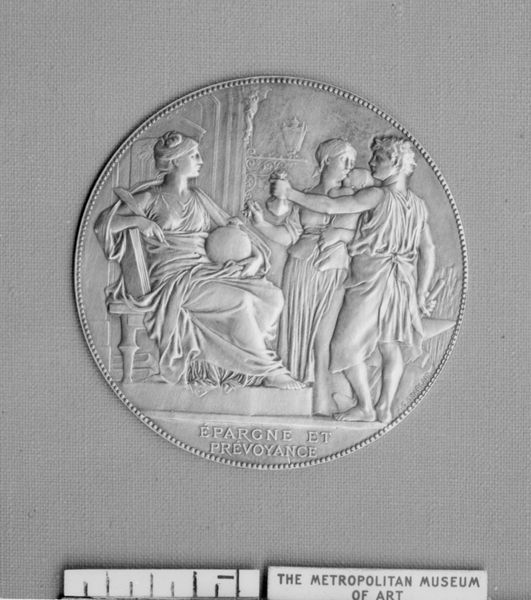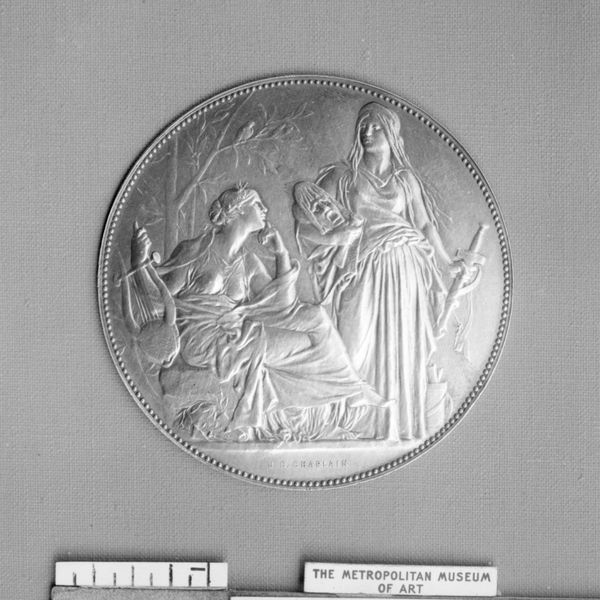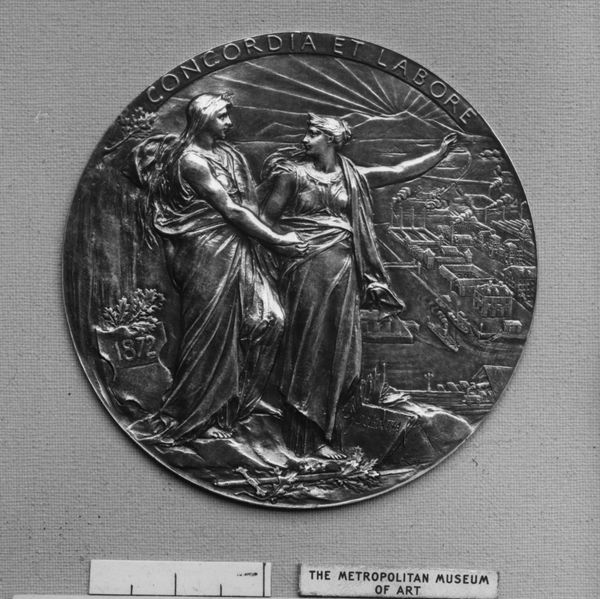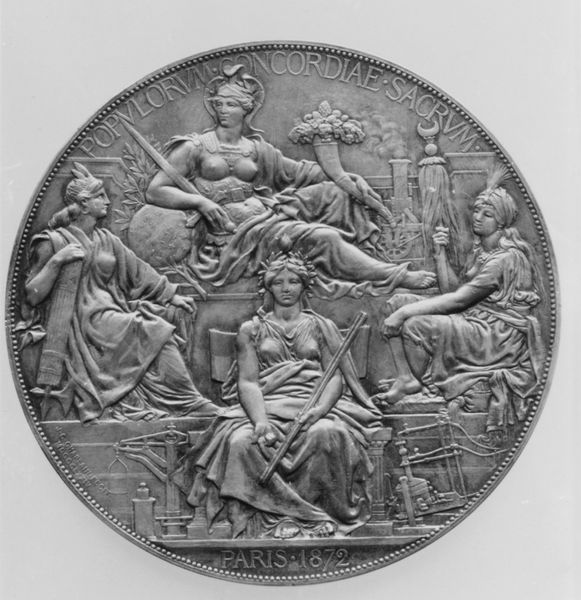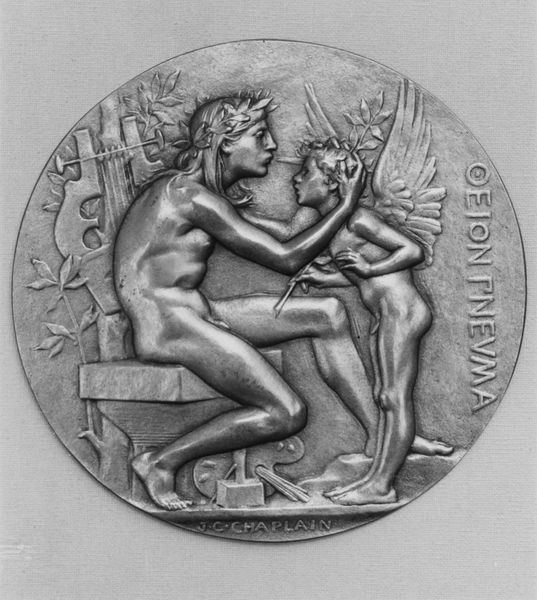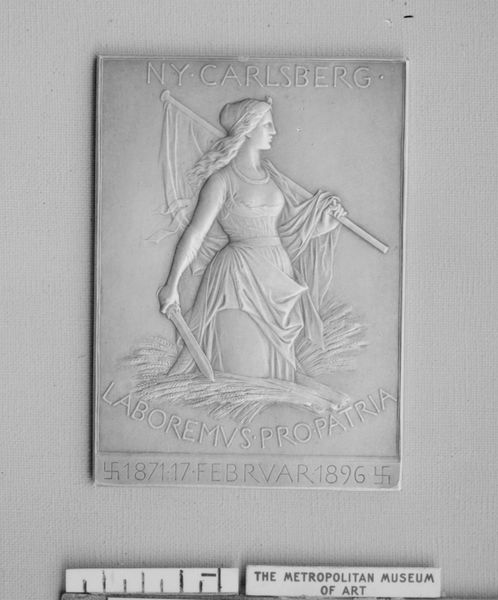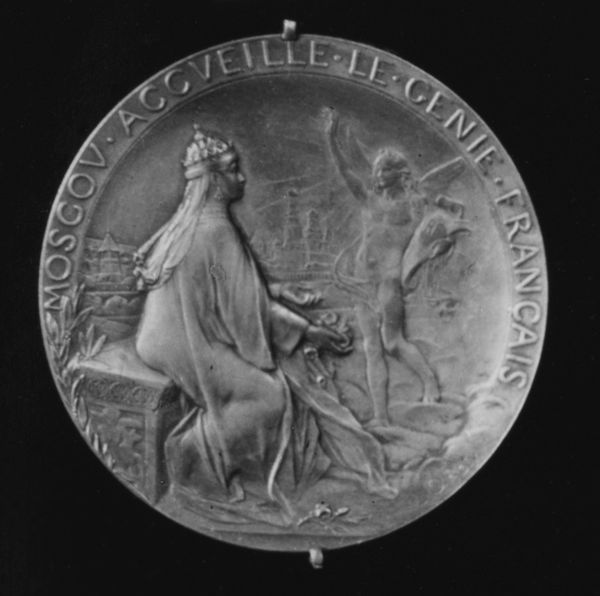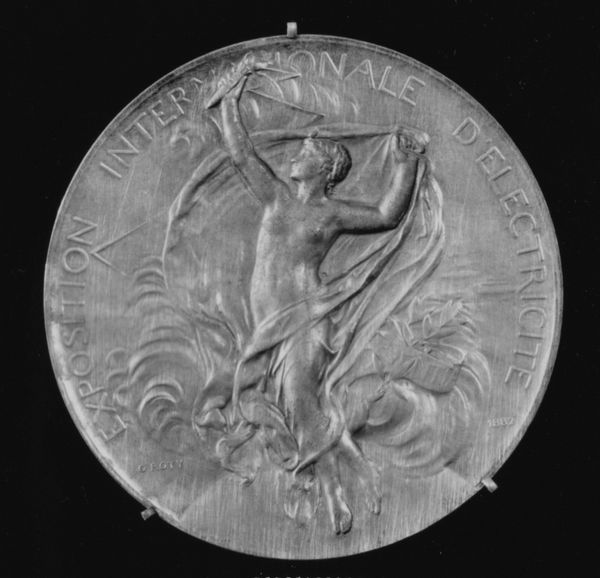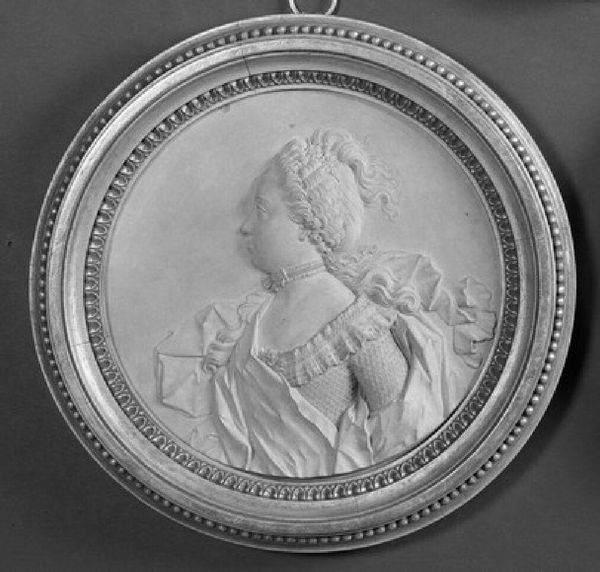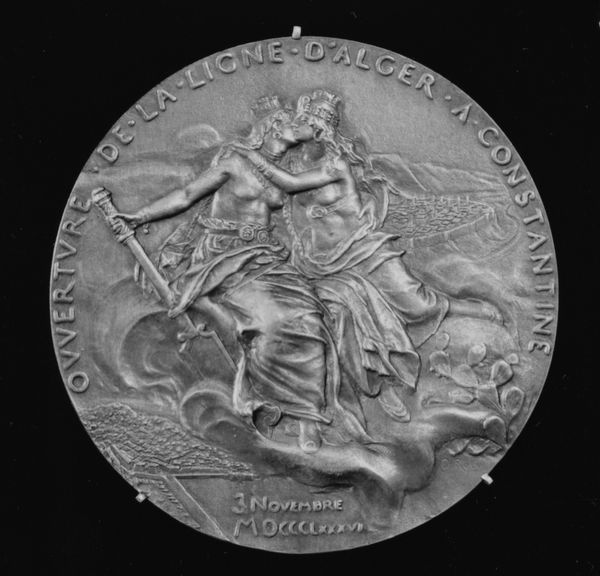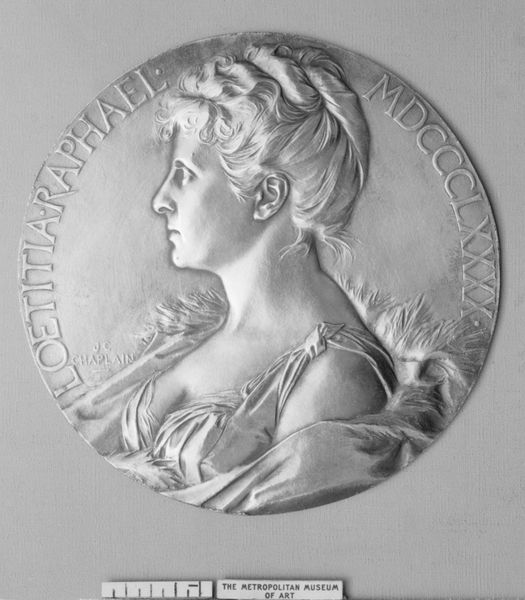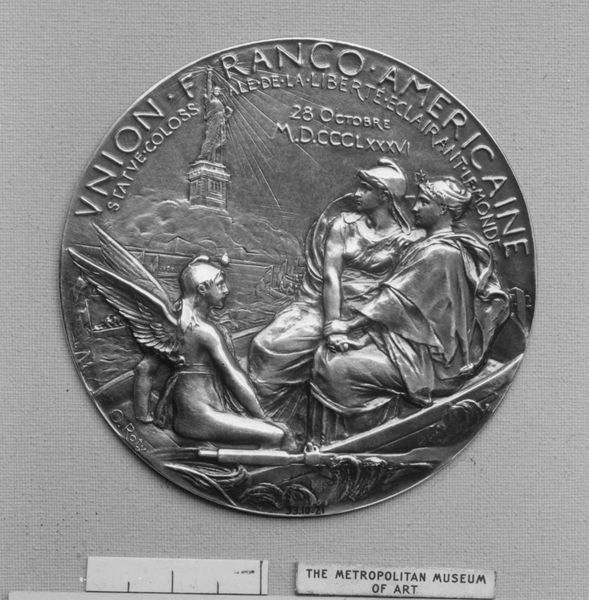
International Congress of Electricians, at Paris, 1881 1881
0:00
0:00
Dimensions: Diameter: 3 1/4 in. (8.3 cm)
Copyright: Public Domain
Curator: Looking at this bronze relief from 1881, the "International Congress of Electricians, at Paris" by Jules-Clément Chaplain, what's your initial read? Editor: My first impression is one of hopeful aspiration. The draped female figure holding a torch aloft evokes Liberty, a promise of enlightenment, yet there is also something classical, perhaps even restrained about it. Curator: The artwork commemorates a significant event: the first international gathering devoted to electricity. It aimed to establish standardized electrical units. The fact that this was memorialized in bronze highlights the institutional recognition of its importance. Editor: The image resonates deeply with archetypal symbols: Zeus, eagles, and that beacon of light. Electricity becomes more than just a technological advancement; it's portrayed almost as a divine gift, bringing light and progress. Do you sense the neoclassical influence in this artwork, aiming to tie modern advancement with a grand, historical lineage? Curator: Absolutely. The Congress itself aimed to create order and standardization. By employing neoclassical imagery, Chaplain visually connected electricity not only to progress but to Enlightenment ideals. We must understand how commemorative art of the time contributed to constructing specific narratives around technology and modernity. The artistic language choice helped reinforce the institutional aspirations for a "new and improved" future through technological and scientific achievement. Editor: Considering the symbolic figures, and the medium, it's striking how the relief creates a sense of timelessness, almost mythologizing this electrical congress. The flowing robes, the heroic postures... It feels deliberately constructed to instill this sense of awe. It's fascinating how public works immortalize specific moments and achievements, enshrining events in metal and memory. Curator: The medal acted as propaganda as well as document. Consider the institutional investment required to create these objects, embedding particular interpretations of progress for the public's consumption. Editor: This bronze relief captures the spirit of an era that intertwined technology and symbolic meaning. Curator: An era where institutional power and aesthetic representation helped shape public understanding of societal change.
Comments
No comments
Be the first to comment and join the conversation on the ultimate creative platform.
